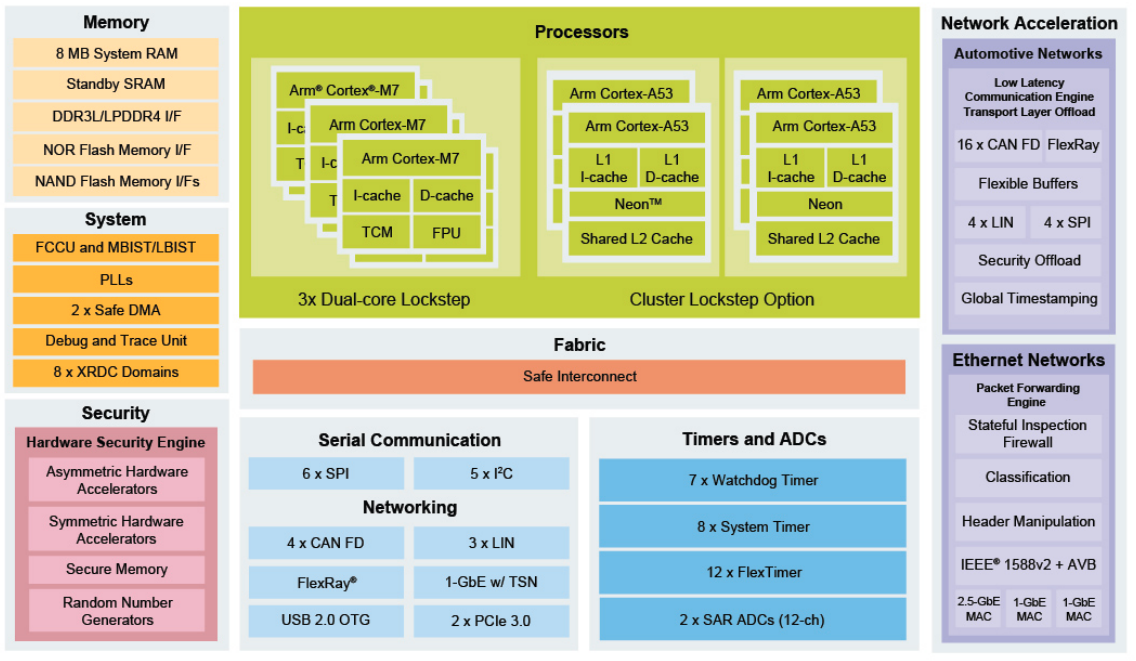ARM64架构Linux内核启动过程分析_上
ARM64架构Linux内核启动过程分析(上)
- Linux内核版本:5.10.90
- 硬件:NXP S32G-VNP-RDB2 (4 * A53,ARM64)

1. ROM code
从外部设备(串口、网络、NAND flash、USB磁盘设备或者其他磁盘设备)加载 Linux bootloader。
2. BootLoader
- 初始化系统中的RAM并将RAM的信息告知kernel
- 准备好device tree blob的信息并将dtb的首地址告知kernel
- 解压内核(可选)
- 加载Linux内核,将控制权转交给内核
在跳入内核之前,必须满足以下条件:
- 停止所有支持 DMA 的设备,这样内存就不会被占用被伪造的网络数据包或磁盘数据损坏。
- 主 CPU 通用寄存器设置
x0 = 系统 RAM 中设备树 blob (dtb) 的物理地址。
x1 = 0(留作将来使用)
x2 = 0(留作将来使用)
x3 = 0(留作将来使用) - CPU模式
所有形式的中断都必须在 PSTATE.DAIF (Debug, SError, IRQ 和 FIQ)。
CPU 必须处于 EL2 中(推荐以便访问虚拟化扩展)或非安全 EL1。 - 缓存、MMU
MMU 必须关闭。
指令缓存可能打开或关闭。
1 | |
3. Linux内核启动
3.1 Linux内核从哪里启动
Linux内核的image有以下几种形式,目前开发板使用未压缩的image。
- vmlinux:原始内核文件,可引导的、未压缩、可压缩的内核镜像,ELF格式
- image:未压缩,调用 objcopy -o binary生成原始二进制文件,本质是将符号与重定位信息舍弃,只剩二进制数据。
- zImage:压缩,二进制文件+gzip压缩
欲知Linux内核的startup entry, 最简单的办法是网上查看相关文章,而且启动点有Kernel startup entry point的注释,可以通过搜索找到head.S文件。
本文尝试通过反汇编 vmlinux,查找Linux内核运行的第一条指令,然后通过第一条指令找到Linux内核启动点。
3.1.1 反汇编vmlinux查找Linux内核启动点
首先查看 vmlinux ELF header,可知 入口地址为 0xffffffc010000000
ps:
入口地址在哪里设置?
offset(TEXT_OFFSET),偏移 256MB
1 | |
反编译 vmlinux。
1 | |
1 | |
从 vmlinux.S可知,内核启动的第一条指令是:
1 | |
对应的section为:.head.text_text,,同时还能看到 arch/arm64/kernel/head.o, head.o的源文件为head.S。
由此我们可知,程序从arch/arm64/kernel/head.S处开始运行,且第一条指令为 b primary_entry
查看
System.map也可以知道启动点ffffffc010000000 t _head
ffffffc010000000 T _text
1 | |
注意,我们确实没有设置CONFIG_EFI。
1 | |
3.2 第一阶段(汇编语言)
3.2.1 primary_entry
1 | |
3.2.2 preserve_boot_args
功能:保存从bootloader传递过来的x0 ~ x3寄存器这四个寄存器
ARM64 boot protocol对这4个寄存器严格限制。x0保存dtb物理地址,x1~x3 = 0。x0是boot_args这段内存的首地址,X1是末地址。后续setup_arch函数会访问boot_args,并进行校验。
使用DMB来保证stp指令在dc ivac指令之前执行完成
将boot_args变量对应的cache line进行清除并设置无效
关于 __inval_dcache_area,可参考:/arch/arm64/mm/cache.S
Ensure that any D-cache lines for the interval [kaddr, kaddr+size)are invalidated. Any partial lines at the ends of the interval are also cleaned to PoC to prevent data loss
1 | |
3.2.3 el2_setup
若处于EL2模式,需要将CPU退回EL1
1 | |
3.2.4 set_cpu_boot_mode_flag
设置全局变量__boot_cpu_mode,前提是CPU退回EL1模式
1 | |
1 | |
3.2.5 __create_page_tables
页表初始化
- identity mapping
- 建立整个内核(从KERNEL_START到KERNEL_END)的一致性mapping,将物理地址所在的虚拟地址段mapping到物理地址
- 一致性映射可以保证在在 打开MMU 那一点附近的程序代码可以平滑切换
https://stackoverflow.com/questions/16688540/page-table-in-linux-kernel-space-during-boot/27266309#27266309
1)在使能 mmu 之前,CPU 产生的地址都是物理地址,使能 mmu 之后,产生的都是虚拟地址。
2)CPU 是 pipeline 工作的,在执行当前指令时,CPU 很可能已经做了一个动作,就是产生了下一条指令的地址(也就是计算出来了下一条指令在那里)。如果是在 mmu 打开之前,那这个地址就是物理地址。
因此,假设当前指令就是在打开 mmu,那么,在执行打开 mmu 这条指令时,CPU 已经产生了一个地址(下一条指令的地址),如上 2) 所讲,此时这个地址是物理地址。那么 打开mmu这条指令执行完毕,mmu 生效后,CPU会把刚才产生的物理地址当成虚拟地址,去 mmu 表中查找对应的物理地址
- Map the kernel image
- 仅从系统内存起始物理地址开始的一小段内存mapping
虚拟地址总线宽度最大可设置52,(36 39 42 47 48 52)
1 | |
3.2.6 __cpu_setup
CPU初始化设置
- cache和TLB的处理
- 清空
- 设置TCR_EL1、SCTLR_EL1
- kernel space和user space使用不同的页表,因此有两个Translation Table Base Registers,形成两套地址翻译系统,TCR_EL1寄存器主要用来控制这两套地址翻译系统
- SCTLR_EL1是一个对整个系统(包括memory system)进行控制的寄存器
- CPU做好MMU打开的准备
1 | |
3.2.7 __primary_switch
1 | |
3.2.8 __enable_mmu
开启MMU
1 | |
3.2.9 __primary_switched
C环境准备
1 | |
3.2.10 start_kernel
汇编阶段结束,第二阶段开始,第二阶段开发语言为C语言。
3.3 第一阶段总结
TODO
参考文档
- Linux内核启动流程-博客园
- Linux内核启动流程-基于ARM64 (推荐阅读)
- Linux内核4.14版本:ARM64的内核启动过程(一)——start_kernel之前
- Linux内核4.14版本:ARM64的内核启动过程(二)——start_kernel
- Linux内核镜像文件格式与生成过程
- ARMv8,某台湾高校教师做的wiki
- ARMv8-a架构简介
- ARM64的启动过程之(一):内核第一个脚印 (系列文章,推荐阅读)
- ARM64的启动过程之(二):创建启动阶段的页表
- ARM64的启动过程之(三):为打开MMU而进行的CPU初始化
- ARM64的启动过程之(四):打开MMU
- ARM64的启动过程之(五):UEFI
- ARM64的启动过程之(六):异常向量表的设定
- ARM-汇编指令集(总结)
- ARM汇编语言 - 简介 [三]
- arm64 架构之入栈/出栈操作 (汇编指令集,推荐阅读)
- MMU是如何完成地址翻译的?